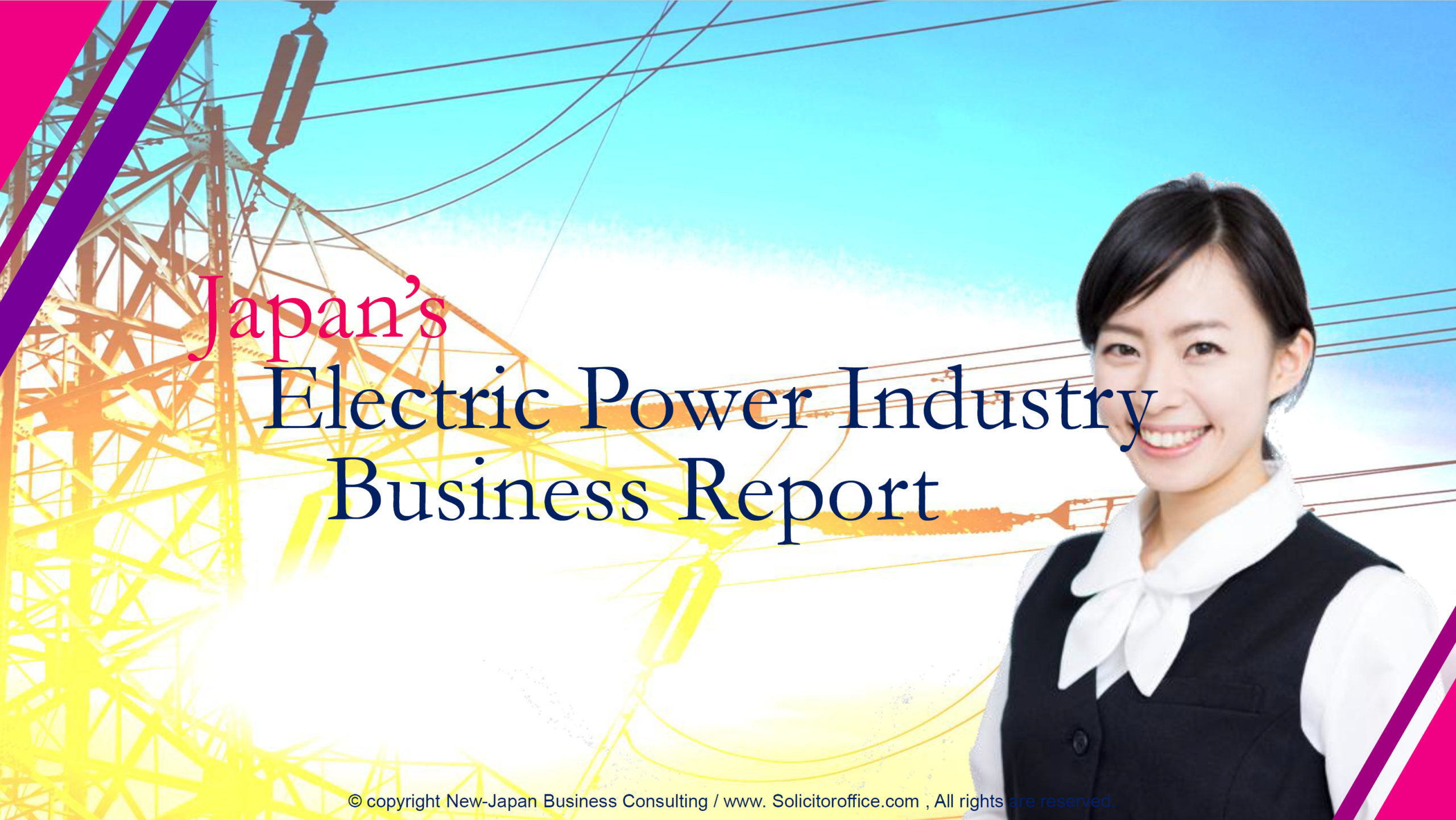説明
Japan’s Electricity Market Is Entering a New Era. Are You Positioned to Lead or Fall Behind?
Japanese Electricity Industry Report – 2025 Edition
Strategic Market Intelligence for Energy Investors, Utilities, Policy Makers, Analysts, and Infrastructure Innovators
Japan’s electricity sector—once viewed as a conservative and insular industry—is undergoing rapid transformation. Deregulation, decarbonization, decentralization, and digitalization are rewriting the rules of power generation, distribution, and consumption. The sector is no longer a slow-moving utility model; it’s a high-stakes energy battlefield.
Our Japanese Electricity Industry Report – 2025 Edition delivers a clear, comprehensive, and practical understanding of this $150+ billion market in flux. Whether you’re an infrastructure investor, IPP, renewable developer, utility strategist, or technology provider, this report will help you identify emerging opportunities, assess risks, and make forward-looking decisions in one of the world’s most unique power markets.
Why Japan’s Electricity Market Demands Strategic Focus
As the world’s third-largest electricity consumer, Japan is both a mature and a vulnerable market. Its dependency on imports, history of nuclear setbacks, and urgent decarbonization targets have made energy policy a central pillar of national security and economic growth.
Unique Characteristics of the Japanese Electricity Industry:
– ⚖️ Market Liberalization Still in Progress
Generation, retail, and transmission have been unbundled, but barriers remain for new entrants in a system still dominated by legacy regional utilities.
– 🏭 High Cost of Power & Import Dependency
Over 80% of Japan’s energy is imported—mostly LNG, coal, and oil—making electricity prices volatile and highly exposed to global shocks.
– 🌱 Ambitious Carbon Neutrality Goals
Japan targets net-zero emissions by 2050, and its electricity sector must decarbonize through renewables, nuclear restarts, hydrogen/ammonia integration, and storage technology.
– ☢️ Post-Fukushima Energy Policy Reforms
Public skepticism toward nuclear, paired with an aging thermal fleet, has created uncertainty and infrastructure gaps, especially in baseload generation.
– 🛰️ Digitalization & Smart Grid Expansion
Japan is rolling out smart meters, VPPs (virtual power plants), and IoT energy management systems to modernize aging infrastructure and support energy prosumers.
Industries covered in this report are represented by the following companies
Tokyo Electric Power Co. Holdings,Inc.
Chubu Electric Power Company,Inc.
The Kansai Electric Power Company,Inc.
The Chugoku Electric Power Company,Inc.
Hokuriku Electric Power Company
Tohoku Electric Power Company,Inc.
Shikoku Electric Power Company,Inc.
Kyushu Electric Power Company,Inc.
Hokkaido Electric Power Company,Inc.
The Okinawa Electric Power Company,Inc.
Electric Power Development Co.,Ltd.
erex Co., Ltd.
RENOVA,Inc.
METAWATER Co.,Ltd.
What You’ll Learn in This Report
This 211+ page strategic report offers the data, insight, and foresight needed to navigate Japan’s evolving electricity industry with confidence. Structured for decision-makers, the report combines macro-level clarity with sector-specific depth.
🔍 Key Sections Include:
Introduction
Overview of the electricity industry
Importance of business models in the energy sector
Purpose and scope of the report
1. Historical Evolution Of The Japanese Electricity Industry
1.1. The establishment of the post-war electricity regime and the nine-power system
1.2. Long-term development as a regulated market (1951-1995)
1.3. Gradual transition process to electricity deregulation (1995-present)
1.4. Electricity system reform after the 2011 great east japan earthquake
2. Business Structure In The Japanese Electricity Market
2.1. Business models and key players in the power generation sector
2.2. Legal separation of the electricity transmission and distribution sector and new forms of business
2.3. Competitive environment and diversified operators in the retail sector
2.4. Price formation mechanisms in electricity markets (e.g. Jepx, capacity markets)
2.5 microgrids and community energy models
3. The Profit Structure And Management Challenges Of The Electricity Sector
3.1. Cost structure and economics of conventional power sources (thermal and nuclear)
3.2. Renewable energy revenue models and fit/fip schemes
3.3. Changes in the financial situation and investment strategies of power utilities
3.4. Fuel procurement strategies and the impact of international energy markets
4. Regional Disparities And Geographical Characteristics Of Electricity Infrastructure
4.1. Geographical constraints of the japanese electricity system (50hz/60hz split, interconnection line capacity)
4.2. Regional power supply composition and electricity supply-demand balance
4.3. Electricity supply models and challenges in remote islands
4.4. Electricity cost and service disparities between urban and rural areas
5. Technological Innovation Is Transforming The Electricity Business
5.1. Business opportunities for smart grids and vpps (virtual power plants)
5.2. Advances in battery technology and new revenue models
5.3. Operational efficiency and new services through the use of digital technology
5.4. New business models using decentralised energy resources
5.5 the role of artificial intelligence and iot in energy management
5.6 the role of hydrogen and alternative energy sources
5.7 integration of electric vehicles (evs) into the energy market
6. Economic And Regulatory Challenges
6.1 electricity pricing structures and market volatility
6.2 government policies and regulatory frameworks across regions
6.3 the impact of carbon pricing and environmental policies
6.4 financial models and investment challenges in renewable energy
7. Characteristics Of The Japanese Electricity Business From An International Comparison
7.1. Comparison with european electricity deregulation models
7.2. Differences with the us electricity market system
7.3. Electricity reforms in asian countries and implications for japan
7.4. Business strategies of japanese power companies expanding abroad
8. Entry From Other Industries And Expansion Of Business Areas
8.1. Examples and business models of telecommunications and it companies entering the electricity business
8.2. Transformation of oil and gas companies into integrated energy companies
8.3. Electricity-related services linked to the housing and real estate industry
8.4. Collaboration with the automotive industry (v2h, v2g, etc.)
9. Decarbonisation Policies And The Future Of The Electricity Business
9.1. Carbon neutrality targets (2050) and the role of the electricity sector
9.2. Non-fossil value trading markets and monetisation of environmental values
9.3. The economic viability and commercialisation prospects of next generation technologies such as hydrogen and ammonia power generation
9.4. The business portfolio transformation of power utilities in the decarbonised era
10. Power Resilience And New Social Values
10.1. Investments in the resilience of electricity infrastructure, with disaster response at its core
10.2. Establishment of regional microgrids and local energy independence
10.3. The possibility of solving social problems through the use of electricity data
10.4. Ensuring energy security and the public interest aspects of the electricity business
10.5 the path to 100% renewable energy: challenges and opportunities
10.6 the role of big tech and non-traditional players in the energy sector
10.7 global energy transition scenarios and predictions
10.8 lessons from other industries: applying digital and platform models
11. Future Prospects For The Japanese Electricity Business
11.1. The potential of p2p electricity trading with the rise of prosumers
11.2. Energy× mobility× convergence business in telecommunications
11.3. Advanced supply and demand coordination and new services using ai and iot technologies
11.4. Circular economy and sustainability of the electricity business
12. References And Additional Resources
12.1 industry reports and market data sources
12.2 recommended literature on innovation in the power industry
Who This Report Is For
This report has been created specifically for strategic decision-makers and high-stakes investors, including:
– Energy Utilities & IPPs planning expansion or innovation in Japan
– Institutional Investors, PE & Infrastructure Funds seeking exposure to renewables or grid assets
– Policy Analysts & Think Tanks evaluating Japan’s carbon neutrality path
– Technology & Grid Solution Providers targeting Japan’s digitizing power system
– Renewable Developers & EPCs entering the Japanese solar, wind, and storage markets
– Corporate Energy Buyers developing ESG strategies in Japan
Why Choose This Report?
– ✅ Built by Market Experts – Created by consultants and researchers fluent in Japan’s regulatory, technical, and commercial realities
– ✅ Forward-Looking & Action-Oriented – Strategic recommendations, investment insights, and SWOT-style risk maps
– ✅ Localized but Global – Japan-focused but globally contextual, making it accessible to foreign investors and operators
– ✅ Fully Updated for 2025 – Includes current policy shifts, market liberalization status, and the latest generation data
Download Now – Equip Your Strategy with Real Insight
Product: Japanese Electricity Industry Report – 2025 Edition
Format: Digital PDF
Language: English
Length: 211+ pages
Price: 4,500 USD
✅ Instant download
✅ Secure checkout (Visa / MasterCard / PayPal)
✅ Update guarantee: Free revision if major regulatory change occurs within 12 months
✅ Enterprise license available for teams and consulting firms
👉 [Buy & Download Now]











